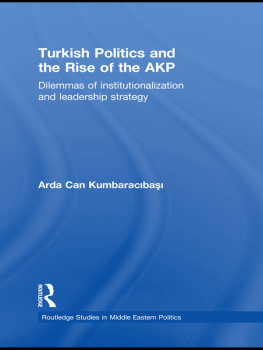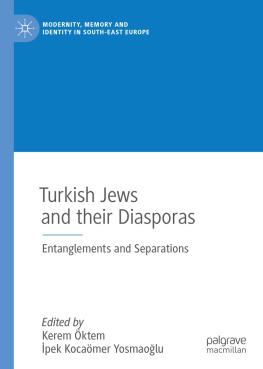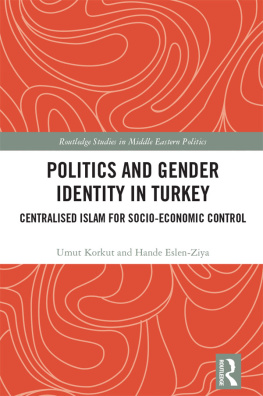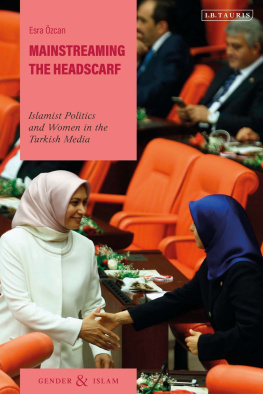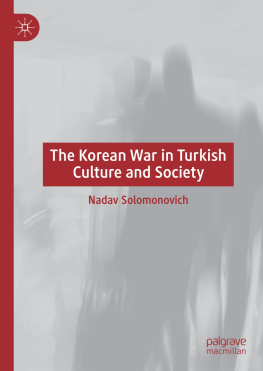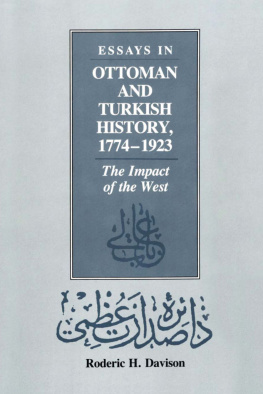
Burcu entrk graduated from Boazii University with a BA in Political Science and International Relations before going on to complete an MSc in Sociology from the Middle East Technical University in Ankara. She holds a PhD in Politics from the University of York. She is currently a faculty member of the Department of Business Administration at Ege University in Turkey.
By looking at the urban poor, Urban Poverty in Turkey offers a new perspective on modernisation in Turkey. It is a well-researched overview of the relevant and current research in the field, but through its focus on the group that has not been previously studied? the work offers valuable and unexpected insight on the impact of modernisation on the poor; in particular the analysis of the different experiences of different generations of slum dwellers and the process of growth and development of the slums are both original and enlightening.
Professor the Baroness Afshar OBE AcSS, University of York
This is an important and original piece of work, on a topic on which there has been very little recent literature. In preparing the book, Burcu entrk lived with her parents in the squatter settlement of Ege, in Ankara, and thus acquired unique first-hand acquaintance with the community. This is reflected in a lively and engaging story. She adds depth to this account by describing the process of migration, outlining? the rural backgrounds of the migrants, as well as the motives for their move. The development of the community, with a second wave of immigrants, is described and analysed with skill and understanding. Burcu entrk thus makes a valuable contribution to the global literature on urban transformation in developing societies.
William Hale, Emeritus Professor, School of Oriental and African Studies, London
URBAN
POVERTY IN
TURKEY
Development and Modernisation in
Low-Income Communities
B URCU ENTRK
Published in 2016 by
I.B.Tauris & Co. Ltd
London New York
www.ibtauris.com
Copyright 2016 Burcu entrk
The right of Burcu entrk to be identified as the author of this work has been asserted by the author in accordance with the Copyright, Designs and Patents Act 1988.
All rights reserved. Except for brief quotations in a review, this book, or any part thereof, may not be reproduced, stored in or introduced into a retrieval system, or transmitted, in any form or by any means, electronic, mechanical, photocopying, recording or otherwise, without the prior written permission of the publisher.
Every attempt has been made to gain permission for the use of the images in this book. Any omissions will be rectified in future editions.
References to websites were correct at the time of writing.
Library of Modern Turkey 21
ISBN: 978 1 78453 653 4
eISBN: 978 1 78672 056 6
ePDF: 978 1 78673 056 5
A full CIP record for this book is available from the British Library
A full CIP record is available from the Library of Congress
Library of Congress Catalog Card Number: available
To all slum dwellers, who surprise the rest of the world with their amazingly creative survival strategies
To the lovely memory of Gven Aydoan, who always follows the wind and silently passed away one midnight in Ege
LIST OF FIGURES
Figure 1. The gecekondu that I rented in Ege.
Figure 2. A breakfast prepared for me and my mother in a gecekondu in Ege.
Figure 3. A gecekondu house with a chimney made from a barrel and a storage area covered with banners.
Figure 4. A couple building a gecekondu in Ege in the 1970s.
Figure 5. A family photograph taken beside the coal yard at the beginning of the 1990s.
Figures 6 and 7. Glay's gecekondu. First they built these two rooms and the corridor (Figure 6). The room to the left of the corridor is now a kitchen. Before, this corridor was used as a kitchen. In due course, they added the living room and the children's room, which are connected (Figure 7).
Figure 8. A view of ankaya-Mamak Viaduct from Ege.
Figure 9. Ege is located in a valley.
Figure 10. Former waste dump.
Figure 11. Hacer's garden, which she uses as a cat shelter.
Figure 12. Ege during urban transformation.
PREFACE
This book is based on lived experiences of squatter dwellers and attempts to understand the transformation of squatter areas in Turkey. My research on the strategies and transformation of squatter dwellers in Turkey went far beyond an academic work and turned into a personal adventure that forced me to question my middle-class values, which I had never previously noticed, and to change them. I am no longer who I was before starting my research. People of Ege, where I stayed with my parents to conduct my fieldwork, warmly welcomed me and my parents, opened their doors wide and let me in by telling their invaluable stories, sharing what they have and also what they do not have. Without their contributions, this work would never have been completed. So, this book belongs to them more than to me.
Living in a squatter neighbourhood reminded me and my parents how to light a stove, as we had done ten years before in our family house, how to find wood and coal, cut the wood and store it. From our storage we took an old copper vessel, large basins and buckets which were quite useful for boiling water on the stove, carrying and storing coal and keeping water in the bathroom. From the fact that half of our conversation was about heating and cleaning away the coal dust, we understood from practical experience how vital the distribution of coal by the municipality was for the people living in squatter areas and why women complain about the difficulties of living in them. Moreover, after living in a multistorey apartment block for ten years, we appreciated the community support in Ege where the neighbours helped us in cutting wood and finding furniture and shared food with us. For me and my parents, this was a life journey through which we came to question our recent middle-class life in the multistorey apartment block and our middle-class values and approach to people in squatter areas. This enabled me to take a critical perspective towards the literature on the residents of squatter settlements, all of which is written by middle-class researchers. In this way, I suppose I was able to abstain from both romanticising and looking down on life in gecekondus. As well as myself, this fieldwork also touched my parents; my father still keeps in touch with his contacts from Ege and my mother, who is a feminist activist, wrote her memoirs and published them in a feminist journal. My parents were devoted enough to live in Ege with me. They lit the stove, cooked for me and put up with all my caprices, which were reflections of my worries about my fieldwork. Without my father, I would not have been able to contact the local men so easily. My mother's observations, questions and concerns about Ege enriched this study. I would like to present my deepest gratitude and apologies to them.
Professor the Baroness Haleh Afshar not only supervised me in my research but also became a role model with her modesty and hardworking, generous and wise personality. She patiently taught me how to understand politics and power relations from the bottom rather than from the top and to challenge the mainstream understanding of politics. Looking back, I realise it has been a privilege to be a researcher under her supervision. I am grateful to Professor Dr William Hale for his mind-opening questions and insightful suggestions to my work and his continuous support. Special thanks to my friend and colleague Erman, who supported me throughout the ups and downs of writing my study and my life in York. Despite their limited time, my friends in Ankara and my brother and his wife all visited me in Ege to encourage me to hold out against my worries and fears. I would also like to thank Anl Gkpek, who not only shared my enthusiasm of my work but also carefully read and patiently edited my book. I enjoy expressing my gratitude to all those who accompanied me throughout this journey and made this study possible.


